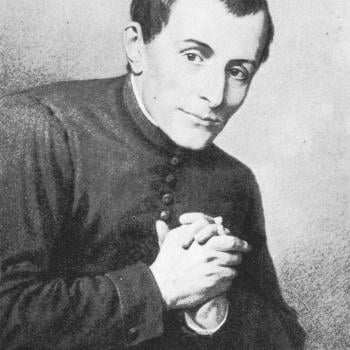About six years ago I was living in Ann Arbor Michigan. I worked as the youth director at an ecumenical Christian organization and spent a lot of my time helping to build relationships between Churches in the area. Part of this work involved volunteering at the inter-church prayer room for a few hours each week, praying with students who would drop in and spending a lot of time alone thinking about God.
One day I came in and there was a giant banner hanging over the pulpit that read, “Why did Jesus die?” At first I didn’t take too much notice of it, but as I sat alone in the room for the next two hours the question began to gnaw at me. It got under my skin, it infected me. It became more than a question, it became a challenge. The question “why did Jesus die,” eventually drove me to question my faith, rethink my dogma and eventually set me on a path that ended in my joining the Catholic Church in the 2013 Easter Vigil.
I don’t think I am alone in this struggle. It is at the heart of many of the strongest objections to the Christian faith I have encountered, and it is one of the most divisive issues in the inter-Christian dialog today.
This article seeks to offer a brief look at this question, and hopefully will inspire you to take a closer look.
So let’s begin with the common narrative that is often told about why Jesus died, at least the most common I hear among American Christians today.
The common narrative
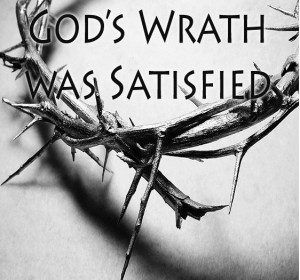 The answer to this question that is most well-known is probably the one laid out in the “four spiritual laws” made popular by the group Campus Crusade. The narrative goes like this:
The answer to this question that is most well-known is probably the one laid out in the “four spiritual laws” made popular by the group Campus Crusade. The narrative goes like this:
1. God loves you and has a wonderful plan for your life. He created you with a good and perfect plan in mind for your life.
2. You have violated that wonderful and perfect plan with your sin. This sin has separated you from God, because it is an offense to his nature and an affront to his honor. Your sin has robbed God of the glory due him. Now his wrath must be appeased and satisfaction must be made for your offenses.
3. The wage of sin is death, but even if you died 1000 times you still wouldn’t be able to satisfy the wrath of God, for what he requires is a perfect sacrifice. God provided that perfect sacrifice in Jesus. Jesus’ death reconciled man to God and offered satisfaction for our sin.
4. If one believes in Jesus, and trusts in the sacrifice he made on the cross, they will have their sins forgiven and will be able to live in union with God forever.
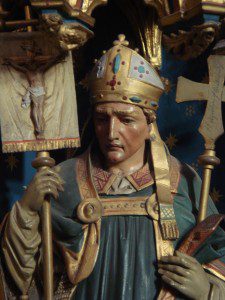 This was basically the explanation that I grew up with, as a confessional Lutheran protestant. I was raised in a tradition that had answered the question of why Jesus died using an explanation
This was basically the explanation that I grew up with, as a confessional Lutheran protestant. I was raised in a tradition that had answered the question of why Jesus died using an explanation invented inspired by the writings of a man named Anselm of Canterbury in (d. 1109), which had emerged as medieval scholastics wrestled to develop a perspective of salvation in light of the feudal world-view that was dominant in Europe at the time. In a world where the Lord of the land’s honor reigned supreme “penal susbstitutionary atonement” became a dominant perspective. In this view Jesus dies in order to satisfy the wrath of God. God is angry because our sin has racked up a great debt. Every time we sin we are essentially stealing from God. God gave us our lives to glorify him and every time we sin we are robbing God of the glory he created our us to have. There is no amount of good works that could ever pay the debt back for neglecting to give god a return on the investment he made in creating us. Our debt could only be paid with an infinite sacrifice. This sacrifice needed to be God himself (for only God is infinite) so Jesus (fully God) reconciled the Father to humanity by offering his blood as that infinite atonement required. Jesus’ death appeases the wrath of God and allows God to forgive us without God violating his righteousness justice and honor. You can see this view articulated here , it’s called “penal substitutionary atonement.”
Like many today, I had difficulty squaring this God with the God I saw in Jesus. It just didn’t make sense to me. How could a man who told parables where kings forgave debts without any mediator or sacrifice be actually saying that God was less capable of mercy then this man. How could the man who refused to condemn the women caught in adultery without her even repenting or forgiving the sins of a paralyzed man because his friends had faith (Mark 2:5) be the same God who required the blood sacrifice of his son in order to maintain his honor while forgiving others their sins.
Rocked by Waldenstrom
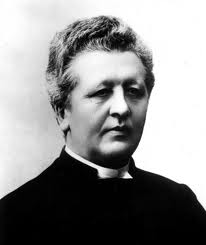 I began to question everything I had been taught about salvation, and then my world was rocked by a simple question, “Where is it written?” This is the question that was written by Swedish Lutheran pietist, P.P. Waldenstrom. Like myself, Waldenstrom had grown up being told that God’s wrath burned against man because his sin was an affront to God’s infinite honor. But, like me, it bothered him. One day Waldenstrom was talking to his friend and he asked the question, “Where is it written?” He could not find any place in the Bible that explained why Jesus had died in that way. It was a presupposition that was read into everything else. He began to argue that the ministry of reconciliation was not Jesus reconciling man to God, but rather God to man. Jesus was God entering into the brokenness of this world and taking on the full wrath of our sin. He died because we are a sinful people who killed him. When Jesus was raised God overcame the final sting of death with a new final word, Jesus. Jesus is the word that testifies that God will not let our sin get in the way of God’s own desire to embrace us. It wasn’t a new thought, in fact it was one of the primary ways the fathers of the Church had answered this question, but for many deeply entrenched in the “penal substitutionary atonement” model it was revolutionary.
I began to question everything I had been taught about salvation, and then my world was rocked by a simple question, “Where is it written?” This is the question that was written by Swedish Lutheran pietist, P.P. Waldenstrom. Like myself, Waldenstrom had grown up being told that God’s wrath burned against man because his sin was an affront to God’s infinite honor. But, like me, it bothered him. One day Waldenstrom was talking to his friend and he asked the question, “Where is it written?” He could not find any place in the Bible that explained why Jesus had died in that way. It was a presupposition that was read into everything else. He began to argue that the ministry of reconciliation was not Jesus reconciling man to God, but rather God to man. Jesus was God entering into the brokenness of this world and taking on the full wrath of our sin. He died because we are a sinful people who killed him. When Jesus was raised God overcame the final sting of death with a new final word, Jesus. Jesus is the word that testifies that God will not let our sin get in the way of God’s own desire to embrace us. It wasn’t a new thought, in fact it was one of the primary ways the fathers of the Church had answered this question, but for many deeply entrenched in the “penal substitutionary atonement” model it was revolutionary.
This insight helped fuel a revival movement in Sweden within the Lutheran church, which in turn came into the United States through Swedish immigrants in the 19th century. These swedes, inspired by the loving God they saw in Christ, formed a denomination today known as the Evangelical Covenant Church. It was in this church that I came to rest as I looked for a denomination that reflected my own convictions about caring for one’s neighbor and worshipping a God who dwelt in solidarity with us.
The Evangelical Covenant Church was a good home for me. They offered room for theological dialog and disagreement. The offered avenues for exploration and encouraged dialog, and most importantly they practiced what they preached. They loved the Bible and their neighbor. They served God and others. They’re mantra in all they did was, “God’s glory and neighbor’s good.” I loved being in the ECC.
However the question about why Jesus died still haunted me. Although I no longer had a theological system that turned God into a monster, I still had to deal with the reality that often I was a monster myself.
An Augustinian insight
The solution to my own dark side was addressed in an unexpected place, through St. Augustine. As I was working on my thesis for my MDiv I began to explore how the fathers of the Church articulated the question of why Jesus died. I was surprised to find that there were a number of attempts made to articulate a rationale that sounded an awful lot like P.P. Waldenstrom. One writer in particular captured my imagination, St. Augustine.
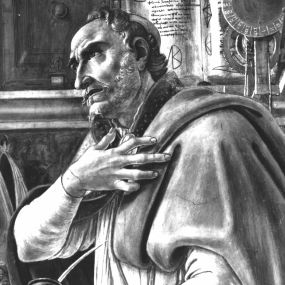 Augustine realized that God could have saved us with his power. God is fully capable of overpowering any creature, sin, vice, or person. God chooses to overcome with Christ’s death because God wanted to create a life with humanity where they could participate in God’s saving action with Him. A pure exercise of divine power would not have given humanity a way of participation. God used the shedding of blood because he wanted to give humanity a path of salvation that they could imitate, and even be united in through the sacramental life of the church.
Augustine realized that God could have saved us with his power. God is fully capable of overpowering any creature, sin, vice, or person. God chooses to overcome with Christ’s death because God wanted to create a life with humanity where they could participate in God’s saving action with Him. A pure exercise of divine power would not have given humanity a way of participation. God used the shedding of blood because he wanted to give humanity a path of salvation that they could imitate, and even be united in through the sacramental life of the church.
Although men and women are freed from death and forgiven of their sins, they are not made perfect when they are baptized into Christ. People still fall into temptation and sin. Augustine also viewed the Cross as a sure guide for endurance in Christ. God’s action in Christ’s life, and death is the starting point that demonstrates what true obedience to God looks like. The salvation which is inaugurated on the cross is worked out as God’s grace works actively in us, and is made perfect as the Church as a whole is saved from even their sinful desires through the purgative life of the saints in unity with one another in Christ. (c.f. Augustine, Sermon 222; 232; 233)
Becoming Catholic
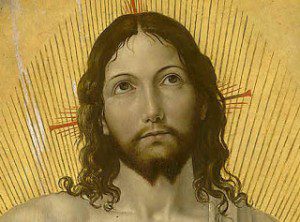 To summarize my journey, I came to believe that Jesus died because we are a people bound to death, and in his death he makes available to creation the power of resurrection. In Jesus we are invited to live again, to join his body, the Church, and to participate more fully each day in the freedom found in his death and to receive grace as he works to sanctify his Body, the Church, and all of its members.
To summarize my journey, I came to believe that Jesus died because we are a people bound to death, and in his death he makes available to creation the power of resurrection. In Jesus we are invited to live again, to join his body, the Church, and to participate more fully each day in the freedom found in his death and to receive grace as he works to sanctify his Body, the Church, and all of its members.
I am not bound to be a lone sinner, forgiven yet broken. Instead I am invited to join into a holy body united with the healing salvation in Christ and commissioned with the promise that the work of my redemption from all sin will be completed as we live and move as a body with Christ our head. I longed to be as fully a part of that body as I could be, and so I began to discern whether that place was the Catholic Church. It wasn’t an easy journey, but eventually I came to the conviction that in the Catholic Church I could most fully be united to the body of Christ (A story told elsewhere). And so in Easter 2013 I entered into full communion to join more fully into the life, death and resurrection of Christ.






